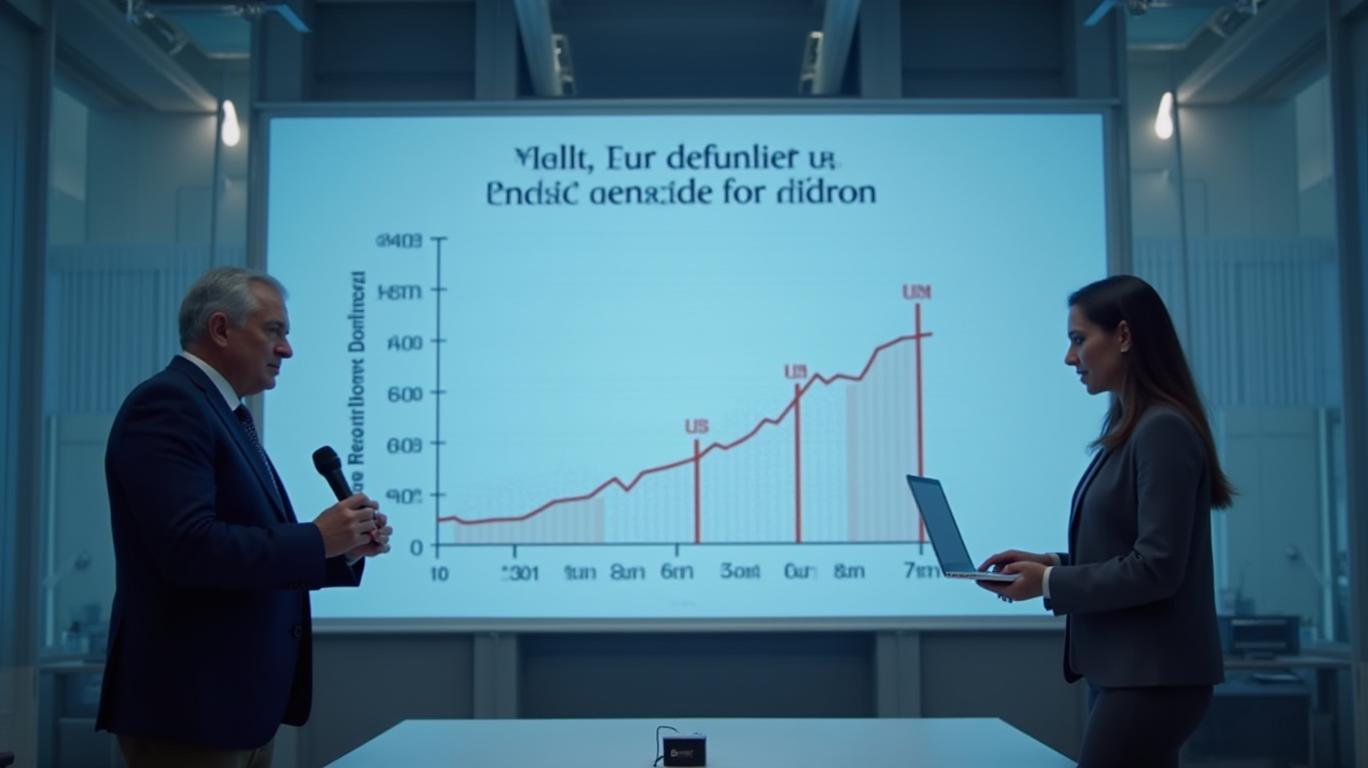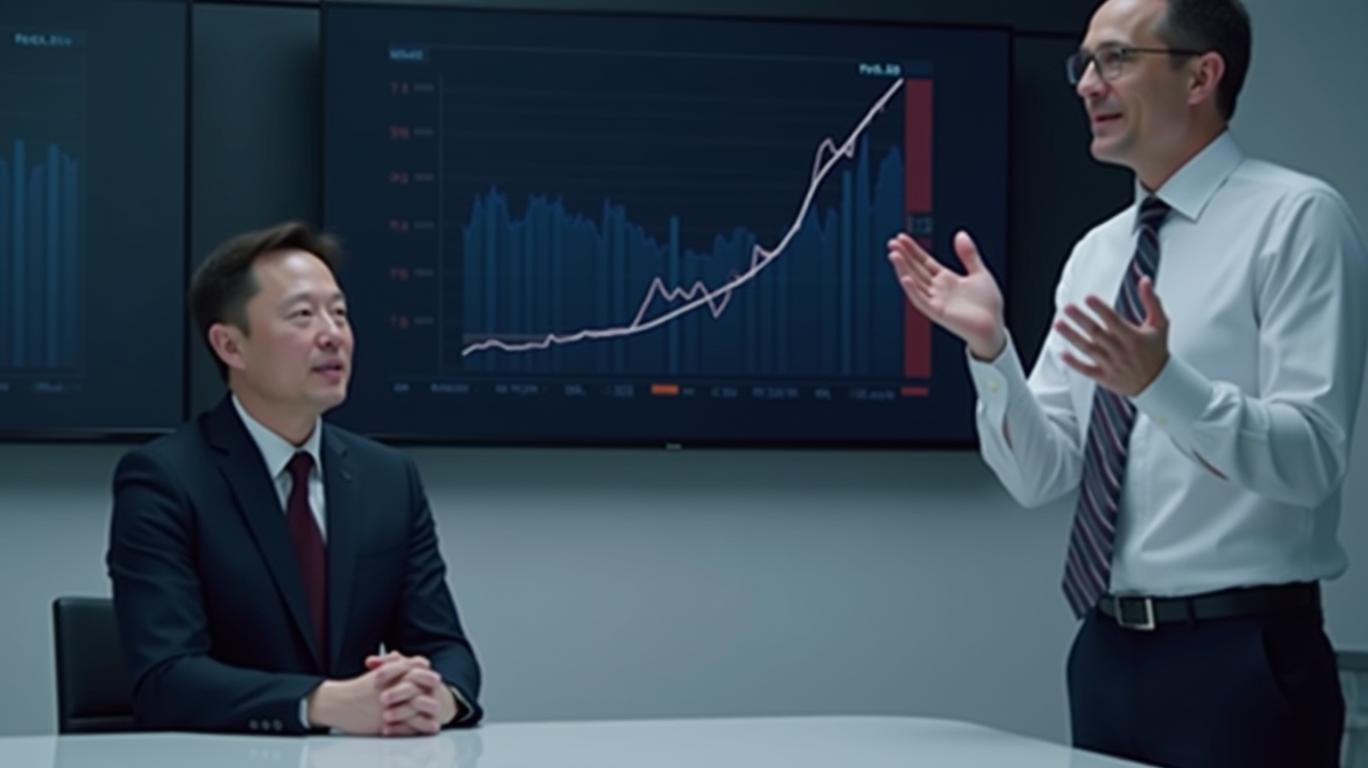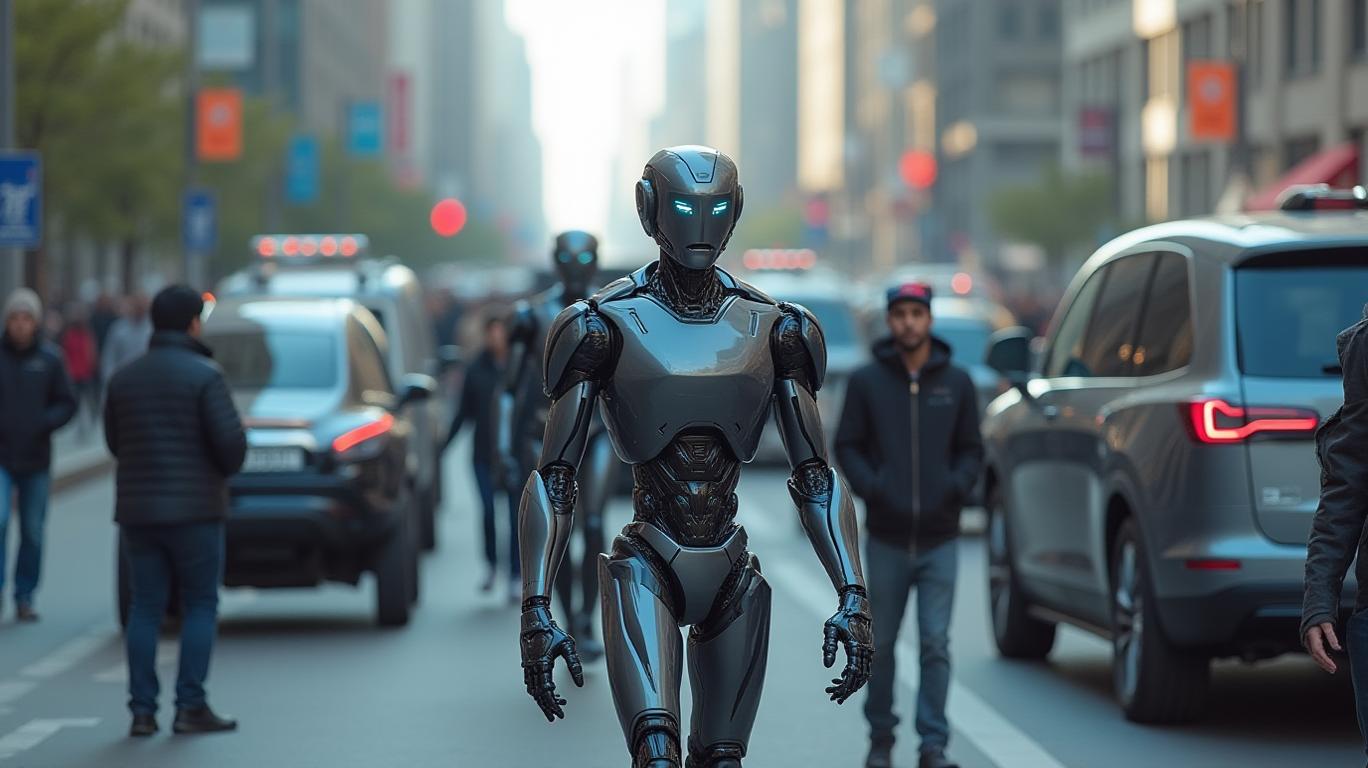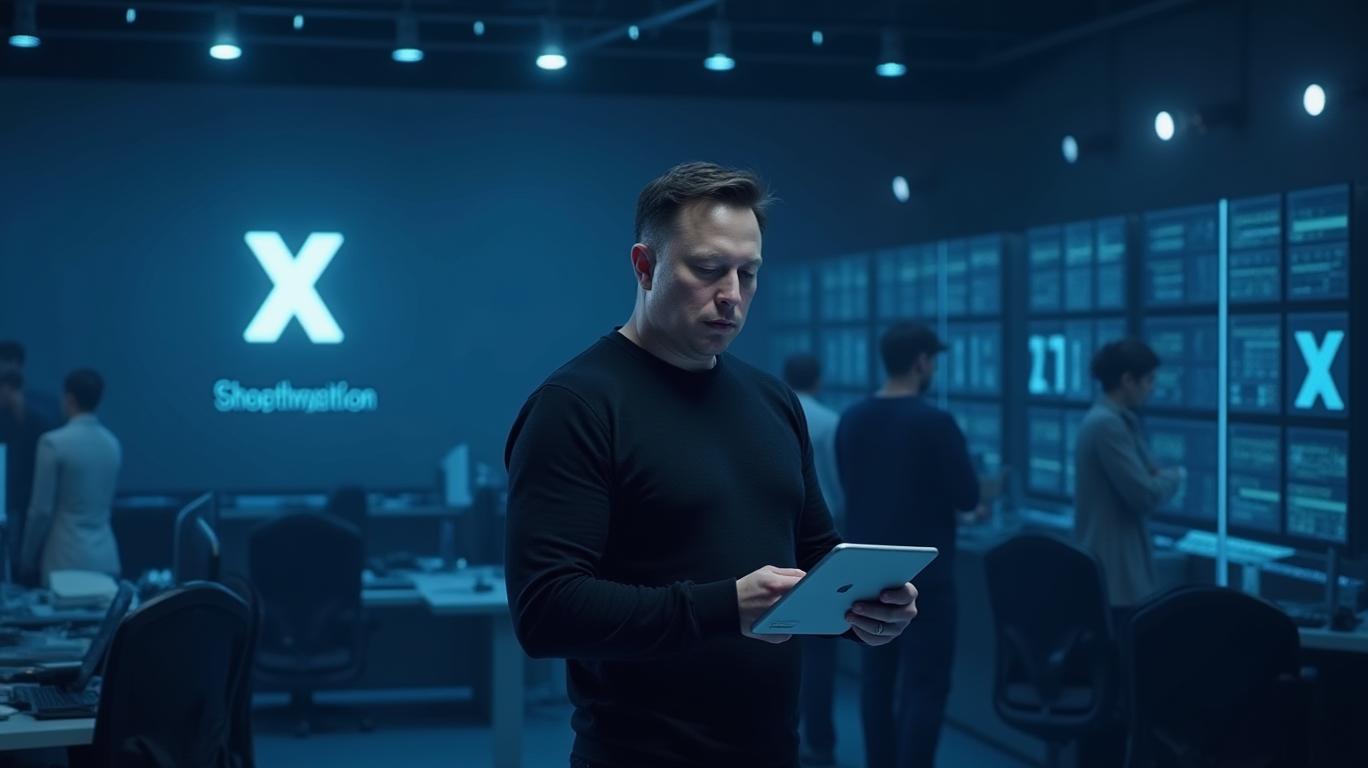Tesla's Crossroads: Can AI and Robotics Outweigh Near-Term Struggles?
Tesla’s stock has been a rollercoaster in 2025, with a 35% year-to-date decline reflecting concerns over production snags, margin erosion, and leadership distractions. Yet beneath the turmoil lies a critical question: Can Tesla’s underappreciated AI and robotics ambitions—backed by a broader industry shift toward AI investments—surprise the market? Analysts are split, but data suggests a pivotal showdown between Tesla’s short-term stumbles and its long-term tech vision.
Ask Aime: Can Tesla's AI ambitions help it overcome current market hurdles?

The Near-Term Struggles
Tesla’s Q1 2025 results underscore a company in transition. Deliveries dropped 13% year-over-year to 336,681 units, with the Cybertruck’s flop standing out: fewer than 50,000 units delivered despite a 200,000 annual target. Production teams were cut by over 50%, and the vehicle’s quality issues and recalls have fueled skepticism. Meanwhile, global competition is intensifying. Chinese rival BYD’s cheaper EVs and faster charging systems (e.g., a five-minute battery charge) are eroding Tesla’s pricing and tech advantages. Margins are under pressure too: automotive revenue fell 22% year-over-year as average selling prices dropped $3,700 amid discounts and the cheaper Model Y Juniper variant.
Analysts have slashed 2025 revenue forecasts to $106.7 billion—a 9% drop from earlier estimates—with EPS now projected at $2.55, down 19%. Bears like JPMorgan warn of a potential 50% further decline, citing brand damage from Elon Musk’s political entanglements and operational missteps.
The 68% AI Surge: Tesla’s Underappreciated Edge
Here’s where the 68% comes in. A KPMG survey reveals 68% of global executives plan to invest $50M–$250M in generative AI over the next year—a 50% jump from 2024—signaling a rapid shift from pilots to full-scale AI adoption. This trend aligns with Tesla’s ambitions in autonomy and robotics, which are underpriced in its stock but could redefine its value.
- Full Self-Driving (FSD): Tesla’s software remains a crown jewel. Musk aims to deploy robotaxis in Austin by mid-2025, with Ark Invest estimating a $1.2 trillion revenue opportunity by 2029. While regulatory hurdles remain, FSD’s licensing potential to other automakers could add billions in high-margin revenue—a point bulls argue is overlooked.
- Optimus Robot: Tesla’s humanoid robot, Optimus, is positioned as a $15 trillion market play. Initial units are expected in 2025, addressing labor shortages in manufacturing. While timelines are aspirational, Tesla’s early lead in physical-world AI could lock in first-mover advantages.
- Energy and AI Synergy: Tesla’s energy division (10% of 2024 revenue) is accelerating, with AI-driven energy management systems and a $37B cash war chest to fuel growth.
Investor Sentiment: Bulls vs. Bears
- Bulls: Retail investors have poured $7.3 billion into tesla stock post-Q1 results, betting on Musk’s tech vision. They see the 2025 slump as a buying opportunity, with a P/E ratio of 140 justified by FSD and Optimus’s long-term potential. “Tesla’s undervalued because the market isn’t pricing in its AI/robotics breakout,” says Gene Munster of Deepwater Asset Management.
- Bears: Institutional investors cite execution risks. The Model Y’s delayed launch, Cybertruck’s underperformance, and Musk’s divided focus (e.g., his role as Trump’s “DOGE” advisor) raise red flags. Barclays lowered its price target to $275, citing “negative volumes” and margin pressures.
Conclusion: A Crossroads for Tesla
The 68% figure highlights a critical industry shift toward AI-driven transformation—a trend Tesla is uniquely positioned to exploit. While 2025’s operational challenges are real, its AI and robotics bets could unlock a $1.3 trillion market opportunity by 2029, dwarfing near-term automotive headwinds. However, success hinges on execution: timely robotaxi launches, Cybertruck quality improvements, and global expansion in energy/storage must align with the bullish narrative.
The market may not be ready for the scale of Tesla’s AI ambitions, but with $37B in cash and a tech-first strategy, Musk’s vision could yet outpace skeptics. For now, investors are betting on a future where Tesla’s “optionality”—not just its cars—defines its value.
The verdict? 2025 is a transition year. If Tesla can navigate production hurdles and validate its AI/robotics roadmap, it might just surprise the 68% who aren’t yet ready for what’s coming.


_cbf77e8c1748017079428.jpeg)






